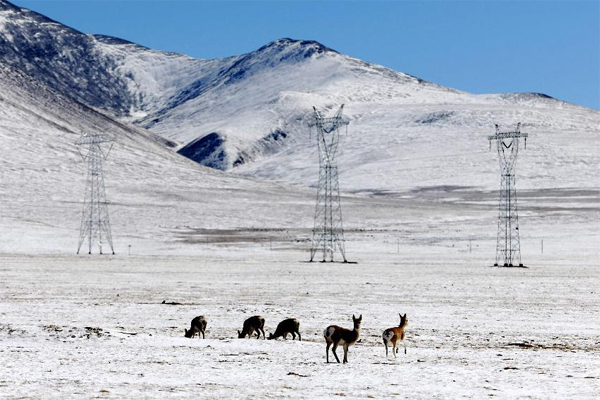
The Qinghai-Tibet grid interconnection project began a trial run on December 9, 2011, and ended Tibetan power grid's isolation. [Photo by Wen Tao/Xinhua]
The vegetation restoration of Qinghai-Tibet grid interconnection project has been completed and about 2.21 million square meters of plateau vegetation has been restored along the line, source from Xinhua News Agency.
The Qinghai-Tibet grid interconnection project began a trial run on December 9, 2011. By far, it is the electricity project with world's highest altitude, across the longest permafrost and with the most fragile ecological environment along its line. The project ends Tibetan power grid's isolation.
With a total investment of 16 billion, 370 million yuan is used to preserve the environment, including the protection and restoration of vegetation, protection of wildlife, permafrost, and wetland and soil and water conservation so as to minimize the environmental impact on the Qinghai-Tibet Plateau, and create green corridor along the line, according to Quan Shengming, vice manager of Qinghai Power Company of national Power Grid.
To effectively protect the vegetation during construction, new roads were avoided as far as possible. Artificial planting was performed to restore the destroyed vegetation. To ensure the survival of vegetation, experts from Institute of Northwest Plateau Biology and institute of Cold and drought of Chinese Academy of Sciences were invited to give advices. For example, in addition to artificial grass planting, turf transplant was used for the recovery in plateau meadows areas.
Currently, with the completion of the vegetation restoration projects, the planted grass grows well.
The 1,038-kilometer-power lines were laid at the plateau with an average altitude of 4,000 meters. Its Golmud-Lhasa section goes through the alpine desert, plateau meadows, wetlands, alpine shrub and other ecosystems, with the Hoh Xil Nature Reserve and Three Rivers Nature Reserve along.
